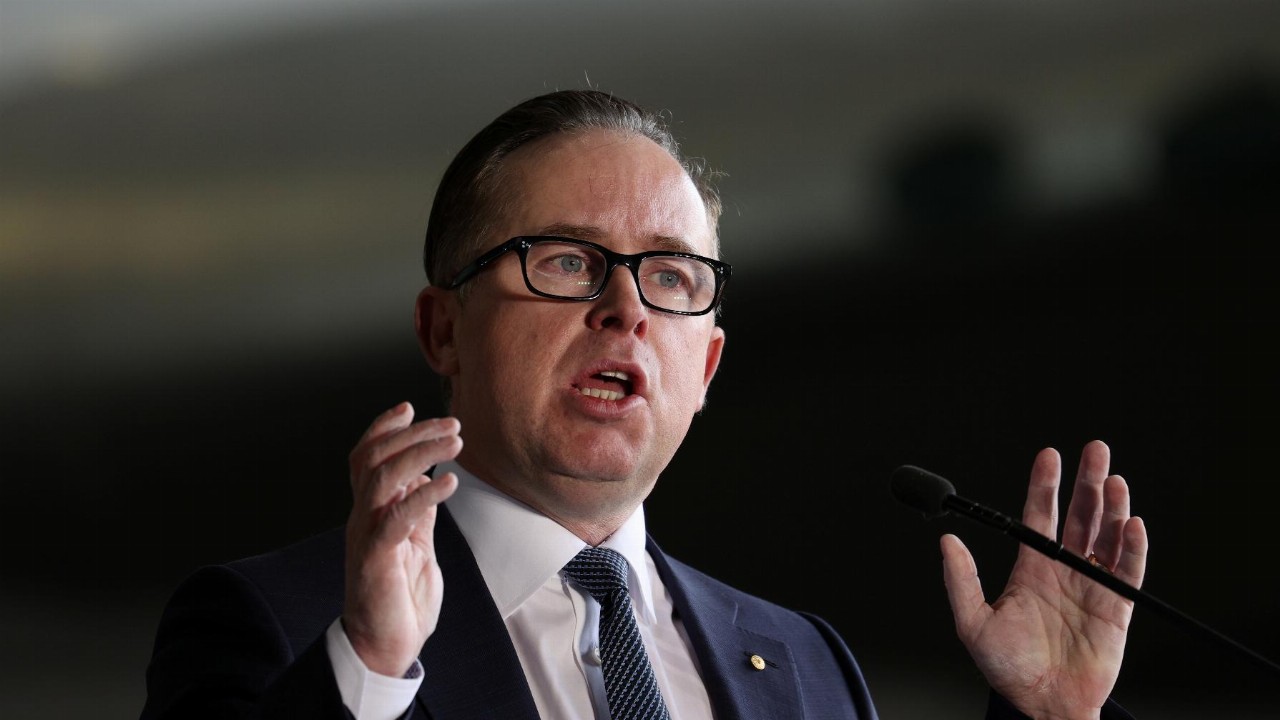- Qantas (QAN) has reported another full-year loss today, but remains optimistic about the resumption of international travel
- Statutory before-tax loss came to $2.35 billion, an improvement over last year’s figure of $2.7 billion
- It was largely the result of a staggering drop in revenue, from $14.2 billion to $5.9 billion
- At the end of the year, the airline had total liquidity of $3.8 billion, consisting of $2.2 billion in cash and undrawn facilities of $1.6 billion
- Shares in Qantas are up 2.67 per cent to $5.00 at 11:47 am AEST
Qantas (QAN) has reported another massive full-year loss today, but remains optimistic about the resumption of international travel later this year.
For the 12 months ending June 30, the hard-hit airline registered a statutory before-tax loss — which includes one-off costs such as redundancies and aircraft write downs — of $2.35 billion. While it was greater than the $2.16 billion loss analysts at Morningstar had been expecting, it’s an improvement over last year’s deficit of $2.7 billion.
It was largely the result of a staggering drop in revenue, from $14.2 billion to $5.9 billion. The biggest decline, unsurprisingly, came from passenger sales, which fell from almost $12.2 billion in 2020 to $3.76 billion in this year. Freight revenue absorbed some of the impact, bringing in nearly $1.32 billion compared to last year’s figure of $1.04 billion, while “other revenue” fell from $1.03 billion to $852 million.
Qantas CEO Alan Joyce said the loss showed the effect that a full year of closed international borders — plus more than 330 days of domestic travel restrictions — had wrought on the airline, commenting that the trading conditions “had frankly been diabolical.”
“It comes on top of the significant loss we reported last year and the travel restrictions we’ve seen in the past few months,” he added.
“By the end of this calendar year, it’s likely COVID will cost us more than $20 billion in revenue.”
Periods of open domestic borders during the second half of the year helped with “significant cash generation”, which allowed Qantas to cut its net debt from $6.4 billion in February to $5.9 billion by the end of June.
At the end of the year, the airline had total liquidity of $3.8 billion, consisting of $2.2 billion in cash and undrawn facilities of $1.6 billion.
In an effort to make a full recovery from the impact of COVID-19, Qantas is now targeting at least $1 billion in permanent annual savings from the 2023 financial year onwards. Roughly $650 million has already been saved in 2021, with that figure expected to hit $850 million by the end of 2022.
Part of those savings come from the standing down of 9400 employees so far. Around 6000 of those had been associated with international flights, while 2500 were stood down due to domestic restrictions.
“Things remain tough, especially for thousands of our people waiting to return to their jobs when borders open and hopefully stay open,” Mr Joyce continued.
“Our focus is getting them back to work as soon as possible, which is why we were ramping up our flying and adding new destinations before the most recent lockdowns.”
According to this morning’s announcement, those recent lockdowns and the trans-Tasman border closure are expected to make a $1.4 billion hit to Qantas’s underlying earnings in the first half of the 2022 financial year. That estimate, however, relies on borders in Victoria and New South Wales reopening in early December.
Should that happen, Qantas expects its domestic capacity to increase to 53 per cent of pre-COVID numbers by the second quarter of 2022, before reaching 110 per cent during the second half of the year.
In addition, Qantas noted that current predictions suggest Australia will reach its vaccination threshold of 80 per cent by December this year, in which case international travel will resume to low risk countries with high vaccination rates, such as the US, Canada, the UK, Singapore and Japan.
Flights to higher-risk places, such as Bali, Jakarta, Manila, Bangkok, Phuket, Ho Chi Minh City and Johannesburg, will be pushed from December this year to April 2022.
“The prospect of flying overseas might feel a long way off, especially with New South Wales and Victoria in lockdown, but the current pace of the vaccine rollout means we should have a lot more freedom in a few months’ time,” Mr Joyce said.
“It’s obviously up to government as to exactly how and when our international borders re-open, but with Australia on track to meet the 80 per cent trigger agreed by National Cabinet by the end of the year, we need to plan ahead for what is a complex restart process.”
Shares in Qantas were up 2.67 per cent to $5.00 at 11:47 am AEST.








